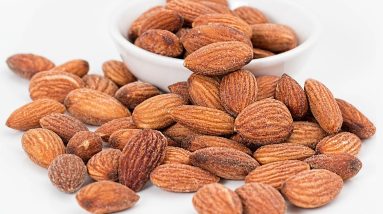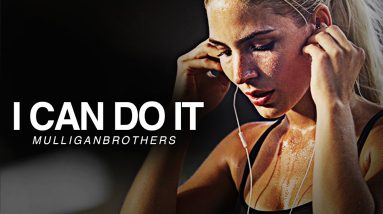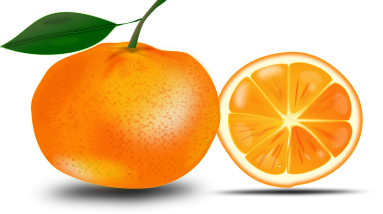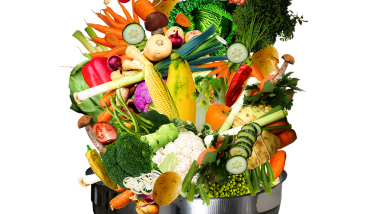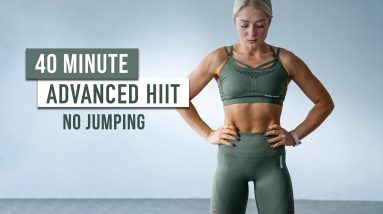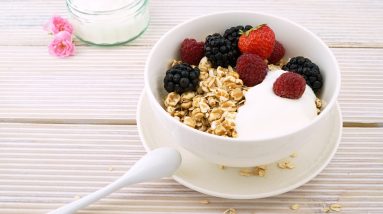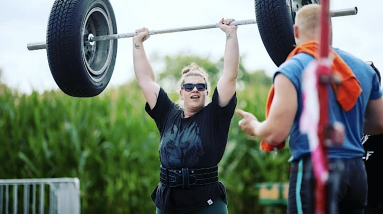
Patricia Smit Dominates the 2023 Netherlands Strongest Woman Competition
The 2023 Netherlands Strongest Woman contest was held on Sept. 17, 2023, in Earnawâld, Netherlands — one day after the 2023 Netherlands Strongest Man U105KG competition. Patricia Smit stood atop the podium in the former contest, while Yoell Blom ranked first in the latter.
Smit scored 61 of a possible 72 points across six events against 11 other strongwoman athletes. Blom raked in 65 of a possible 72 points through the same five events: Deadlift, Bag Toss Medley, Yoke Into Sandbag, Farmer’s Walk, Overhead Ladder, and Atlas Stones.
2023 Netherlands Strongest Woman Results
- Patricia Smit — 61 points
- Mayke Van Wouven — 59 points
- Femke Huisman — 58 points
- Elisa Hessels — 51 points
- Kelly Franssen — 48 points
- Jamie Lee Boudri — 42 points
- Christel Veenstra — 31 points
- Rowena Wehnes — 31 points
- Chelsea Schweiger — 25 points
- Linda Schenk — 24 points
- Yvonne Allards — 21 points
- Femkje Buijs — 17 points
[Related: Mitchell Hooper Explains How Better Cardio Fuels Strength Gains]
2023 Netherlands Strongest Man U105KG Results
- Yoell Blom — 65 points
- Joey Henraath — 57.5 points
- Wim Van De Groep — 53 points
- Christian Van Elderen — 48 points
- Randy Doornekamp — 45 points
- Ruben Van Kreij — 45 points
- John-Mark Bolwerk — 44.5 points
- Jeffrey Laterveer — 38 points
- Tom Van De Burg — 26 points
- Toni Pieters — 23 points
- Alex Schiltmans — 13 points
- Kane Verberkt — 10 points
[Related: How To Do the Alternating Dumbbell Press (+ the Best Variations for Muscle and Strength)]
View this post on InstagramA post shared by Patricia Smit (@miss_silverback)
[Related: How Many Calories Should I Eat Per Day? A Guide for All Your Fitness Goals]
2023 Netherlands Strongest Woman Event Results
Below are the results for each of the five events comprising the 2023 Netherlands Strongest Woman contest:
Deadlift For Reps
Each athlete was tasked to lift 140, 160, 180, 200, and 220 kilograms for as many reps as possible in the 75-second time cap. A single rep at a higher weight trumped any number of reps at a lower weight.
- Patricia Smit — Three of 220 kilograms in 65.59 seconds
- Femke Huisman — One of 220 kilograms in 42.17 seconds
- Mayke Van Wouven — One of 200 kilograms in 71.62 seconds
- Kelly Franssen — One of 200 kilograms in 21.52 seconds
- Yvonne Allards — One of 200 kilograms in 43.93 seconds
- Elisa Hessels — Two of 180 kilograms in 49.37 seconds
- Jamie Lee Boudri — Two of 180 kilograms in 53.58 seconds
- Rowena Wehnes — One of 180 kilograms in 16.02 seconds
- Linda Schenk — Five of 160 kilograms in 66.11 seconds
- Christel Veenstra — Four of 160 kilograms in 72.27 seconds
- Femkje Buijs — Two of 160 kilograms in 30.33 seconds
- Chelsea Schweiger — One of 160 kilograms in 20.52 seconds
Bag Toss Medley
The Bag Toss over a four-meter bar consisted of five implements weighing 10, 12, 14, 16, and 18 kilograms.
- Patricia Smit — Four in 26.06 seconds
- Mayke Van Wouven — Four in 40.71 seconds
- Kelly Franssen — Four in 48.86 seconds
- Femke Huisman — Three in 23.27 seconds
- Elisa Hessels — Three in 25.05 seconds
- Jamie Lee Boudri — Three in 26.8 seconds
- Rowena Wehnes — Three in 59.95 seconds
- Femkje Buijs — Two in 17.77 seconds
- Chelsea Schweiger — One in 5.68 seconds
- Christel Veenstra — One in 11.83 seconds
- Linda Schenk — One in 12.8 seconds
- Yvonne Allards — One in 15.74 seconds
Yoke Into Sandbag
The yoke and sandbag weighed 210 and 80 kilograms, respectively. Each implement had to be carried down a 15-meter course.
- Elisa Hessels — Two in 15.91 seconds
- Patricia Smit — Two in 17.04 seconds
- Mayke Van Wouven — Two in 18.78 seconds
- Femke Huisman — Two in 19.19 seconds
- Jamie Lee Boudri — Two in 21.79 seconds
- Kelly Franssen — Two in 22.09 seconds
- Christel Veenstra — Two in 23.63 seconds
- Chelsea Schweiger — Two in 27.47 seconds
- Linda Schenk — Two in 30 seconds
- Yvonne Allards — Two in 30.62 seconds
- Rowena Wehnes — Two in 34.47 seconds
- Femkje Buijs — Two in 35.57 seconds
Farmer’s Walk
Each athlete carried 60 kilograms down a 20-meter course for distance.
- Christel Veenstra — 93.9 meters
- Chelsea Schweiger — 91.8 meters
- Mayke Van Wouven — 82.2 meters
- Elisa Hessels — 83.5 meters
- Femke Huisman — 80.5 meters
- Jamie Lee Boudri — 80 meters
- Linda Schenk — 70.8 meters
- Patricia Smit — 67.2 meters
- Yvonne Allards — 66.1 meters
- Kelly Franssen — 65.7 meters
- Femkje Buijs — 60 meters
- Rowena Wehnes — 59.8 meters
Overhead Ladder
Within the 75-second time cap, each athlete attempted to lift 40, 50, 60, 70, or 80 kilograms. One rep at a higher weight outranked any number of reps at a lower weight.
- Femke Huisman — Four of 80 kilograms in 62.8 seconds
- Rowena Wehnes — Three of 80 kilograms in 63.9 seconds
- Mayke Van Wouven — Three of 80 kilograms in 67.14 seconds
- Patricia Smit — Three of 80 kilograms in 74.85 seconds
- Kelly Franssen — Two of 80 kilograms in 69.8 seconds
- Jamie Lee Boudri — Two of 80 kilograms in 70.42 seconds
- Elisa Hessels — Two of 70 kilograms in 64.02 seconds
- Femkje Buijs — One of 70 kilograms in 30.67 seconds
- Linda Schenk — One of 70 kilograms in 35.24 seconds
- Yvonne Allards — Four of 60 kilograms in 64.3 seconds
- Christel Veenstra — Four of 60 kilograms in 72.2 seconds
- Chelsea Schweiger — Three of 60 kilograms in 61.61 seconds
Atlas Stones
The six Atlas Stones weighed 50, 80, 90, 100, 110, and 120 kilograms.
- Patricia Smit — Six in 41.68 seconds
- Mayke Van Wouven — Six in 52.75 seconds
- Kelly Franssen — Five in 29.83 seconds
- Femke Huisman — Five in 40.09 seconds
- Elisa Hessels — Five in 54.08 seconds
- Jamie Lee Boudri — Four in 28.65 seconds
- Rowena Wehnes — Four in 30.74 seconds
- Christel Veenstra — Four in 36.52 seconds
- Linda Schenk — Four in 42.36 seconds
- Chelsea Schweiger — Four in 45.58 seconds
- Femkje Buijs — Three in 33.11 seconds
- Yvonne Allards — Three in 81.02 seconds
[Related: Develop a Better Mind-Muscle Connection With These Quick Tips]
View this post on InstagramA post shared by Yoëll Blom | krachtcoach (@yoellblom)
[Related: How to Make Homemade Meal Replacement Shakes to Fuel Your Training Goals]
2023 Netherlands Strongest Man U105KG Event Results
Below are the results for each of the five events comprising the 2023 Netherlands Strongest Man U105KG contest:
Deadlift For Reps
The available weights were 200, 220, 240, 260, and 280 kilograms for as many reps as possible in the 75-second time cap. A single rep at a higher weight outranked any number of reps at a lower weight.
- Tom Van De Burg — Five of 280 kilograms in 65 seconds
- Yoell Blom — Five of 280 kilograms in 74 seconds
- Ruben Van Kreij — Three of 280 kilograms in 60 seconds
- John-Mark Bolwerk — Three of 280 kilograms in 64 seconds
- Wim Van De Groep — Three of 280 kilograms in 70 seconds
- Joey Henraath — Two of 280 in 45 seconds
- Jeffrey Laterveer — One of 280 kilograms in 47 seconds
- Randy Doornekamp — Three of 260 kilograms in 63 seconds
- Christian Van Elderen —Two of 260 kilograms in 70 seconds
- Toni Pieters — Two of 260 kilograms in 75 seconds
- Alex Schiltmans — One of 260 kilograms in 36 seconds
- Kane Verberkt — One of 240 kilograms in 14 seconds
Bag Toss Medley
The Bag Toss over a four-meter bar consisted of five implements weighing 18, 20, 22, 24, and 26 kilograms.
- Randy Doornekamp — Five in 17.62 seconds
- Yoell Blom — Five in 21.56 seconds
- Christian Van Elderen — Five in 22.9 seconds
- Ruben Van Kreij — Five in 25 seconds
- Joey Henraath — Five in 30.07 seconds
- Wim Van De Groep — Five in 46.97 seconds
- Jeffrey Laterveer — Four in 14 seconds
- John-Mark Bolwerk — Four in 22 seconds
- Toni Pieters — Four in 42 seconds
- Tom Van De Burg — Three in 38 seconds
- Kane Verberkt — Two in 11 seconds
- Alex Schiltmans — Two in 12 seconds
Yoke Into Sandbag
The yoke and sandbag weighed 340 and 120 kilograms, respectively, to be carried down a 15-meter course.
- Joey Henraath — 19.97 seconds (T-first)
- John-Mark Bolwerk — 19.97 seconds (T-first)
- Wim Van De Groep — 21.78 seconds
- Jeffrey Laterveer — 22.94 seconds
- Yoell Blom — 23.63 seconds
- Christian Van Elderen — 24.15 seconds
- Ruben Van Kreij — 25.4 seconds
- Randy Doornekamp — 36.47 seconds
- Tom Van De Burg — 39.65 seconds
- Toni Pieters — 42.66 seconds
- Kane Verberkt — 48.01 seconds
- Alex Schiltmans — 50.69 seconds
Farmer’s Walk
This walk for distance along a 20-meter course involved 110 kilograms.
- Wim Van De Groep — 64.3 meters
- Yoell Blom — 60 meters
- Joey Henraath — 59.1 meters
- Christian Van Elderen — 54.5 meters
- Randy Doornekamp — 52.1 meters
- John-Mark Bolwerk — 49.75 meters
- Jeffrey Laterveer — 41.35 meters
- Ruben Van Kreij — 40 meters
- Kane Verberkt — 33 meters
- Alex Schiltmans — 24.1 meters
- Tom Van De Burg — 23.3 meters
- Toni Pieters — 23.1 meters
Overhead Ladder
The weights were 80, 90, 100, 110, and 120 kilograms. A single rep at a higher weight outranked any number of reps at a lower weight.
- Yoell Blom — Three of 120 kilograms in 58.27 seconds
- Joey Henraath — Three of 120 kilograms in 60.62 seconds
- Randy Doornekamp —Three of 120 kilograms in 65.37 seconds
- Christian Van Elderen — Three of 120 kilograms in 70.78 seconds
- Ruben Van Kreij — Three of 120 kilograms in 73.37 seconds
- Jeffrey Laterveer — Two of 120 kilograms in 60.18 seconds
- Toni Pieters — Two of 120 kilograms in 65.75 seconds
- Wim Van De Groep — One of 120 kilograms in 39.83 seconds
- John-Mark Bolwerk — One of 110 kilograms in 35.11 seconds
- Tom Van De Burg — One of 110 kilograms in 39.61 seconds
- Alex Schiltmans — One of 110 kilograms in 47.26 seconds
- Kane Verberkt — One of 100 kilograms in 23.46 seconds
Atlas Stones
Within 90 seconds to a 1.15-meter platform, each athlete loaded six stones weighing 130, 140, 150, 160, 170, and 180 kilograms in the fastest time possible.
- Yoell Blom — Six in 79.53 seconds
- Wim Van De Groep — Five in 32.54 seconds
- Joey Henraath — Five in 61.18 seconds
- Christian Van Elderen — Five in 88.28 seconds
- John-Mark Bolwerk — Four in 32.52 seconds
- Ruben Van Kreij — Four in 55.71 seconds
- Toni Pieters — Three in 58.86 seconds
- Randy Doornekamp — Two in 14.74 seconds
- Jeffrey Laterveer — Two in 15.85 seconds
- Alex Schiltmans — Two in 18.65 seconds
- Tom Van De Burg — Two in 23.65 seconds
- Kane Verberkt — One in 18.05 seconds
More Strongman Content
- 2023 England’s Strongest Man and Strongest Woman Results
- Gavin McNamee Wins 2023 UK’s Strongest Man U90KG
- Brian Shaw Suffered a Torn Pec at the 2023 Shaw Classic
Featured image: @miss_silverback on Instagram
The post 2023 Netherlands Strongest Woman Results — Patricia Smit Victorious appeared first on BarBend.
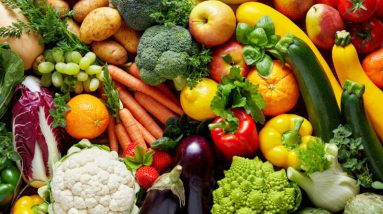
10 Compelling Reasons to Embrace a Raw Food Lifestyle
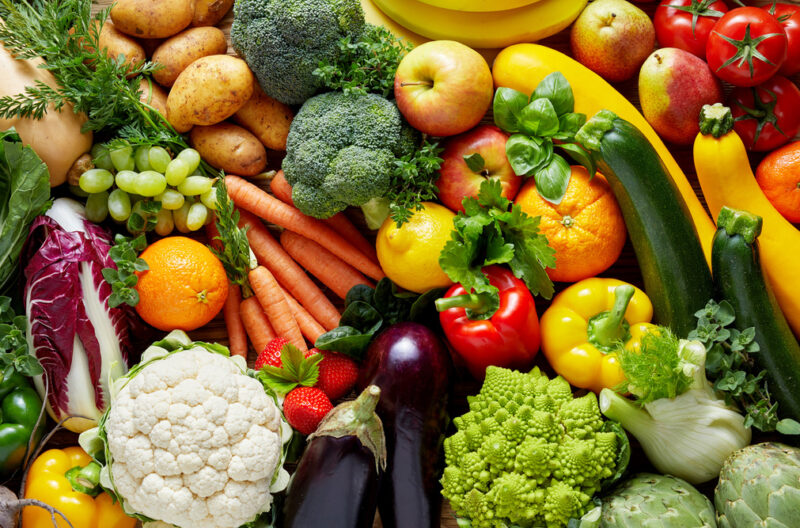
The most important reason to eat raw is to benefit from the enzymes. Enzymes can rightfully be called the fountain of youth. They are necessary for breaking down and absorbing the food that we eat. Enzymes are essential for the body’s vitality. Simply put, we are not what we eat we are what we digest. All food that we eat must be broken down. Our cells cannot absorb large structures. Protein must be broken down into amino acids, complex carbohydrates into simple sugars and fats into fatty acids. This is a huge job for our bodies and where most health problems begin. Without enzymes digestion can become very compromised. When we cook our food, we lose the enzymes. Heating food to over 118 degrees Fahrenheit destroys the enzymes present in the raw ingredients. Food that contains few or no enzymes depletes your body of its own natural resources, accelerates the ageing process, and can cause illness due to a struggling digestion system.
If possible, try to eat fruits and vegetables that are organic. Crops today are heavily sprayed with herbicides and pesticides and this can be very toxic to the gut microbiome. If you are unable to purchase organic food, try using a vegetable and fruit cleanser, available in most health food stores. This would help to remove bacteria and pesticide residue. Scrub root vegetables with a stiff brush that you use just for your food. There is a list well documented from the EWG called the “CLEAN 15 AND DIRTY DOZEN” that you could take a look at for what is recommended to go strictly organic and where you can be more flexible. https://eatrealamerica.com/wp-content/uploads/2019/03/EWG-Clean-15-and-Dirty-Dozen-PDF.pdf
Try not to go overboard on spinach, Swiss chard, and kale. These foods contain oxalic acid, which inhibits the absorption of the essential mineral’s calcium, magnesium, and zinc. This does not mean that you must avoid them completely as they do contain important nutrients. Adding these greens to your salads a couple of times a week would be fine.
Other benefits from eating a raw food diet include experiencing an improvement in skin and increased energy. It is important to stay fully hydrated if you want nice skin and the fact that fruits and vegetables contain a lot of water allows you to do just that. In fact, the quality of the water in organic fruits and vegetables is much safer and higher than in tap water as there are no chemicals, only nutrients. If you eat raw food, you will notice that you are less thirsty and therefore can get away with drinking less water.
If you are looking to lose some weight, eating rawer will certainly help you do just that. Raw foods, being unprocessed, there is no need to worry about extra fats, sugars, and additives which are the main contributors to weight gain. Added to this, the quantity of fiber that you get eating raw as opposed to cooked will increase elimination resulting in less bloat and constipation.
To conclude, I am not suggesting that we all gravitate to a completely raw diet. But it would make a big difference if we all focused a little bit more on what we are fueling our body with. Perhaps just try to include more fruit and salads each day. When you are eating a cooked meal adding some leafy greens for added enzymes can make all the difference on how you digest that meal.
The post reasons to go raw appeared first on Total Gym Pulse.
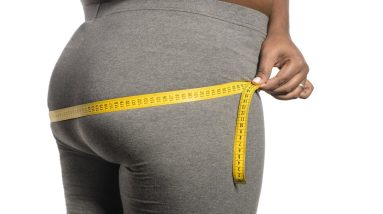
The Ultimate Guide to Shedding Hip Fat: Expert Tips and Tricks
How to Reduce Hip Fat: A Comprehensive Guide Blog – HealthifyMe Blog – HealthifyMe – The definitive guide to weight loss, fitness and living a healthier life.
Excess hip fat can be a source of frustration and concern for many individuals. Whether it’s for health reasons or simply to boost self-confidence, the quest to reduce hip fat is a common goal. If you’ve found yourself searching for ways to trim down your hips, you’re not alone. In this comprehensive guide, we will explore effective strategies, tips, and techniques to help you achieve your goal of reducing hip fat.
Understanding the dynamics of hip fat, its impact on your overall health, and the factors contributing to its accumulation is the first step in your journey. From there, we will delve into practical steps you can take, including adopting healthy eating habits, incorporating targeted exercises, making lifestyle changes, and even considering supplements to aid your efforts. Tracking your progress and staying motivated are also crucial aspects of this journey.
By the end of this guide, you’ll have a well-rounded understanding of how to reduce hip fat and the tools necessary to embark on this transformative journey towards a healthier, more confident you. So, let’s dive in and discover the path to achieving those desired results and embracing life with reduced hip fat.
Types of Hip Fat
When it comes to addressing hip fat, it’s crucial to understand the two primary types of fat that can accumulate in this area: subcutaneous fat and visceral fat.
Subcutaneous Fat
Subcutaneous fat is the fat that lies just beneath the skin’s surface in the hip and thigh area.
It is the type of fat that you can typically pinch and feel.
While subcutaneous fat is less harmful to your health compared to visceral fat, excessive accumulation can still affect your appearance and self-confidence.
Subcutaneous fat serves as a source of energy and helps regulate body temperature.
Visceral Fat
Visceral fat, also known as intra-abdominal or organ fat, is the fat that surrounds your internal organs, including those in the abdominal and hip regions.
It is not visible from the outside, making it different from subcutaneous fat.
High levels of visceral fat are associated with increased health risks, including heart disease, type 2 diabetes, and certain cancers.
Visceral fat can release inflammatory substances that can negatively impact your overall health.
Factors Contributing to Hip Fat Accumulation
To effectively reduce hip fat, it’s essential to recognize the various factors that can contribute to its accumulation. Understanding these contributing factors can help you make informed choices and tailor your approach to target hip fat effectively. Here are the key factors:
Dietary Habits
High-Calorie Intake: Consuming more calories than your body needs can lead to fat storage, including in the hip area. A diet rich in high-calorie, processed, and sugary foods can contribute to hip fat accumulation.
Unhealthy Fats: Diets high in saturated and trans fats can promote fat storage in the hip region. Replacing these fats with healthier options like monounsaturated and polyunsaturated fats can be beneficial.
Physical Activity Levels
Sedentary Lifestyle: Lack of regular physical activity and prolonged periods of sitting can lead to the storage of excess fat in the hips and other areas. Incorporating more movement into your daily routine is crucial for burning calories and reducing hip fat.
Lack of Strength Training: Focusing solely on cardio exercises without incorporating strength training can limit your ability to tone and shape your hip area. Resistance exercises can help build muscle and boost metabolism.
Hormonal Changes
Menopause: Women going through menopause often experience hormonal changes that can lead to increased fat storage, especially in the hips and abdomen. Hormone replacement therapy and a balanced diet can help manage this.
Imbalanced Hormones: Hormonal imbalances, such as insulin resistance or thyroid disorders, can contribute to fat accumulation around the hips. Consult with a healthcare provider to address these issues.
Stress
Chronic stress triggers the release of cortisol, a hormone associated with fat storage, particularly around the abdominal and hip areas. Stress management techniques, such as meditation and yoga, can help reduce cortisol levels.
Lack of Sleep
Poor sleep patterns and inadequate rest can disrupt hormones related to appetite and metabolism, potentially contributing to hip fat gain. Aim for 7-9 hours of quality sleep each night.
Summary
Effectively reducing hip fat necessitates a thorough understanding of the contributing factors. These factors include dietary habits like high-calorie intake and unhealthy fats, which can promote fat storage in the hip area. Sedentary lifestyles and a lack of strength training can hinder fat reduction, while hormonal changes, such as those during menopause or due to imbalanced hormones, may lead to increased hip fat. Chronic stress and insufficient sleep can further exacerbate the issue by triggering cortisol release and disrupting appetite-regulating hormones. Addressing these factors through dietary adjustments, physical activity, stress management, and adequate sleep is essential for effective hip fat reduction.
Effective Exercises to Reduce Hip Fat
Now that we’ve gained an understanding of the factors contributing to hip fat accumulation, it’s time to explore effective exercises that can help you trim and tone your hips. Incorporating targeted workouts into your fitness routine is key to achieving your goal of reducing hip fat. Below are some exercises that focus on the hip area:
A. Squats
How to Perform: Stand with your feet shoulder-width apart. Lower your body by bending your knees and hips, as if you’re sitting back into an imaginary chair. Keep your back straight and chest up. Push through your heels to return to the starting position.
Benefits: Squats target the muscles in your hips, thighs, and buttocks, helping to shape and tone these areas while burning calories.
B. Lunges
How to Perform: Take a step forward with one leg and lower your body until both knees are bent at a 90-degree angle. Keep your front knee directly above your ankle and your back knee hovering just above the ground. Push off the front foot to return to the starting position.
Benefits: Lunges work the hip muscles, thighs, and glutes, contributing to hip fat reduction and lower body strength.
C. Hip Raises (Glute Bridges)
How to Perform: Lie on your back with your knees bent and feet flat on the floor, hip-width apart. Lift your hips off the ground by squeezing your glutes and pushing through your heels. Hold for a moment at the top, then lower your hips back down.
Benefits: Hip raises target the glutes and hamstrings, helping to lift and shape the buttocks while also engaging the hip muscles.
D. Leg Lifts
How to Perform: Lie on your side with your legs straight. Lift your top leg as high as you can without bending it at the knee, then lower it back down.
Benefits: Leg lifts focus on the outer hip muscles and can help tone and sculpt this area.
E. Cardiovascular Exercises
Running, Walking, Cycling: Engaging in cardio workouts helps burn overall body fat, which includes fat stored in the hips. Aim for at least 150 minutes of moderate-intensity cardio exercise per week.
Lifestyle Changes to Reduce Hip Fat
Achieving and maintaining a leaner hip area requires more than just exercise; it involves adopting healthier lifestyle habits that support your fat reduction goals. In this section, we’ll explore key lifestyle changes you can make to effectively reduce hip fat and improve your overall well-being:
A. Stress Management
Incorporate mindfulness techniques, such as meditation and deep breathing exercises, into your daily routine to reduce stress levels. Lowering stress can help prevent excess cortisol production, which can lead to hip fat accumulation.
B. Adequate Sleep
Aim for 7-9 hours of quality sleep each night by maintaining a consistent sleep schedule. Quality sleep supports hormonal balance, which is essential for weight management.
C. Reduce Sedentary Behavior
Avoid prolonged sitting or inactivity. Take short breaks to stand, stretch, or walk around, especially if you have a sedentary job. Consider a standing desk or a stability ball chair to engage your core and hip muscles while working.
D. Hydration
Drinking an adequate amount of water throughout the day helps maintain metabolism and supports overall health. Sometimes, thirst can be mistaken for hunger, leading to unnecessary snacking.
E. Healthy Eating Habits
Focus on a diet rich in fruits, vegetables, lean proteins, and whole grains. Avoid or limit processed foods, sugary drinks, and excessive saturated fats. Be mindful of portion sizes to avoid overeating. Use smaller plates and practice intuitive eating, listening to your body’s hunger and fullness cues.
F. Limit Alcohol Consumption
Excessive alcohol consumption can contribute to hip fat accumulation due to its high-calorie content and impact on metabolism. Limit your alcohol intake or opt for healthier beverage choices.
G. Caffeine Intake
While caffeine can boost metabolism, excessive consumption may lead to increased stress and disrupted sleep. Consume caffeine in moderation and be mindful of its effects on your body.
H. Regular Physical Activity
Maintain a regular exercise routine that includes both cardiovascular workouts and strength training exercises to burn calories and tone your hip area. Mix up your workouts to prevent plateaus and keep your body challenged.
Summary
Effectively reducing hip fat necessitates a thorough understanding of the contributing factors. These factors include dietary habits like high-calorie intake and unhealthy fats, which can promote fat storage in the hip area. Sedentary lifestyles and a lack of strength training can hinder fat reduction, while hormonal changes, such as those during menopause or due to imbalanced hormones, may lead to increased hip fat. Chronic stress and insufficient sleep can further exacerbate the issue by triggering cortisol release and disrupting appetite-regulating hormones. Addressing these factors through dietary adjustments, physical activity, stress management, and adequate sleep is essential for effective hip fat reduction.
Supplementing Your Efforts to Reduce Hip Fat
While a balanced diet and regular exercise are the cornerstones of any successful hip fat reduction plan, some individuals may consider supplements to complement their efforts. It’s important to note that supplements should never be a replacement for a healthy lifestyle, and their effectiveness can vary from person to person. Before incorporating any supplements into your routine, consult with a healthcare professional to ensure they are safe and suitable for you. Here are some supplements that are commonly associated with hip fat reduction
A. Omega-3 Fatty Acids
Sources: Omega-3 supplements are often derived from fish oil, krill oil, or algae.
Benefits: Omega-3 fatty acids have anti-inflammatory properties and may help with weight loss and reducing visceral fat, including that around the hips.
B. Green Tea Extract
Sources: Green tea extract supplements contain concentrated amounts of beneficial compounds found in green tea.
Benefits: Green tea extract is believed to boost metabolism and promote fat oxidation, potentially aiding in hip fat reduction.
C. Conjugated Linoleic Acid (CLA)
Sources: CLA is found naturally in meat and dairy products, but supplements provide a concentrated form.
Benefits: CLA supplements have been studied for their potential to reduce body fat, including in the hip area, and may support lean muscle mass.
D. Protein Supplements
Sources: Protein supplements can include whey protein, casein protein, or plant-based protein sources.
Benefits: Adequate protein intake is crucial for muscle maintenance and repair. Protein supplements can help you meet your protein needs, especially if you have difficulty doing so through diet alone.
E. Fiber Supplements
Sources: Fiber supplements contain soluble or insoluble fibre, which can aid in digestion and promote a feeling of fullness.
Benefits: Fiber supplements may help control appetite and reduce overall calorie intake, indirectly supporting hip fat reduction.
Tracking Progress in Your Hip Fat Reduction Journey
Measuring and monitoring your progress is a crucial aspect of achieving your goal of reducing hip fat. By tracking your efforts, you can stay motivated, identify what’s working, and make necessary adjustments to your plan. Here are some effective ways to track your progress:
A. Body Measurements
Regularly measure your hip circumference using a measuring tape. Record these measurements in a journal or on a tracking app to see changes over time.
Take progress photos from multiple angles to visually track changes in your hip area. Compare these photos regularly to assess improvements.
B. Scale Weight
While scale weight alone is not a perfect measure of hip fat reduction, it can provide valuable insights. Weigh yourself consistently at the same time of day and under the same conditions (e.g., after waking up and using the restroom).
Look for trends in weight changes over weeks or months rather than daily fluctuations.
C. Fitness Progress
Keep a fitness journal to log your exercise routines, including the type, duration, and intensity of workouts.
Track improvements in your strength and endurance, which can indicate progress in muscle development and fat loss.
D. Nutrition Diary
Maintain a food diary to record what you eat and drink each day. Include portion sizes and details about meals and snacks.
Use apps or websites to help you track calorie intake and macronutrient distribution. This can help you stay accountable for your dietary goals.
E. Clothing Fit
Pay attention to how your clothing fits. Changes in the way your clothes fit around your hips can be a positive indicator of fat loss and improved body composition.
F. Energy Levels and Well-Being
Note changes in your energy levels, mood, and overall well-being. Feeling more energetic and positive can be an indirect measure of your progress.
G. Consistency and Goals
Set specific, measurable, and achievable goals for your hip fat reduction journey. Track your progress toward these goals to stay motivated.
Monitor your consistency in following your exercise and nutrition plan. Consistency is often the key to success.
H. Consult a Professional
Consider working with a personal trainer, nutritionist, or healthcare provider who can help you track your progress accurately and provide expert guidance.
Summary
Measuring and monitoring your progress in reducing hip fat is essential for staying on course and achieving your goals. Tracking methods include recording your hip measurements and taking progress photos to visually assess changes. While scale weight can offer insights, it should be viewed in the context of trends over weeks or months. Maintaining a fitness journal helps log exercise routines and strength gains. Keeping a nutrition diary aids in monitoring dietary choices and portion control. Pay attention to clothing fit, energy levels, and mood improvements as indirect indicators of progress. Consistency and goal setting are crucial, and seeking professional guidance can provide accurate tracking and expert support throughout your journey.
HealthifyMe Suggestion
Hip fat reduction can be an important aspect of the health journey for many. It may lead to a pear-shaped body which means having a higher hip circumference as compared to the abdomen. There are many factors that are involved in hip fat reduction like stress management, a balanced diet, regular physical activity, hydration, etc. Apart from all of these factors, it is very important that you are sleeping well and have low to moderate stress levels. Lower body fat accumulation in excess can even indicate cortisol fat.
Before working on any approach try introspecting what could be the reason for this and then target the major reasons one by one.
Conclusion
In conclusion, the journey to reducing hip fat is not only about aesthetics but also about improving your overall health and well-being. By understanding the factors contributing to hip fat accumulation, making strategic lifestyle changes, and incorporating effective exercises, you can make significant progress toward your goal. Remember that sustainable results take time, and patience is key.
Tracking your progress through measurements, photos, and other methods can help you stay motivated and make necessary adjustments to your plan. Additionally, consulting with professionals when needed, such as personal trainers or nutritionists, can provide valuable guidance and support.
Ultimately, reducing hip fat is not a one-size-fits-all endeavour. Tailor your approach to your individual needs and preferences, and focus on long-term health and fitness rather than quick fixes. With dedication and the right strategies in place, you can achieve a leaner and healthier hip area, boosting your confidence and overall quality of life.
Disclaimer: The purpose of this article is just to disperse knowledge and raise awareness. It does not intend to replace medical advice from professionals. For further information please contact our certified nutritionists Here
Frequently Asked Questions (FAQs)
While targeted exercises can help tone and strengthen the hip area, spot reduction of fat is not generally effective. To reduce hip fat, focus on overall fat loss through a combination of exercise and a balanced diet.
The timeline for seeing results varies among individuals and depends on factors like genetics, diet, and exercise consistency. It’s common to start noticing changes in a few weeks, but significant results may take several months.
Any cardiovascular exercise that raises your heart rate, such as running, cycling, or brisk walking, can contribute to overall fat loss, including hip fat. The key is consistency and combining cardio with a healthy diet.
No single food can specifically target hip fat. A balanced diet that includes lean proteins, whole grains, fruits, vegetables, and healthy fats is essential for overall fat reduction.
Strength training is beneficial for building muscle, which can boost metabolism and contribute to fat loss. Including strength exercises in your routine can help you achieve more comprehensive results.
Supplements should not be relied upon as the primary method for hip fat reduction. They can support your efforts, but a healthy diet and exercise regimen should be the foundation of your strategy.
Hormonal changes, such as those during menopause or due to imbalanced hormones, can lead to increased fat storage in the hip area. Managing hormones through a balanced diet and lifestyle choices is crucial for addressing this issue.
Genetics can influence where your body tends to store fat. Some individuals may naturally store more fat in their hip area, while others may accumulate it elsewhere. However, lifestyle factors still play a significant role in managing hip fat.
Yes, chronic stress can lead to the release of cortisol, a hormone associated with fat storage, including in the hip and abdominal regions. Managing stress through relaxation techniques can be helpful in reducing hip fat.
It’s recommended to measure your progress every few weeks or monthly to track changes effectively. Daily or weekly measurements can sometimes show minor fluctuations that may not accurately reflect your overall progress.
The post How to Reduce Hip Fat: A Comprehensive Guide appeared first on Blog – HealthifyMe.


